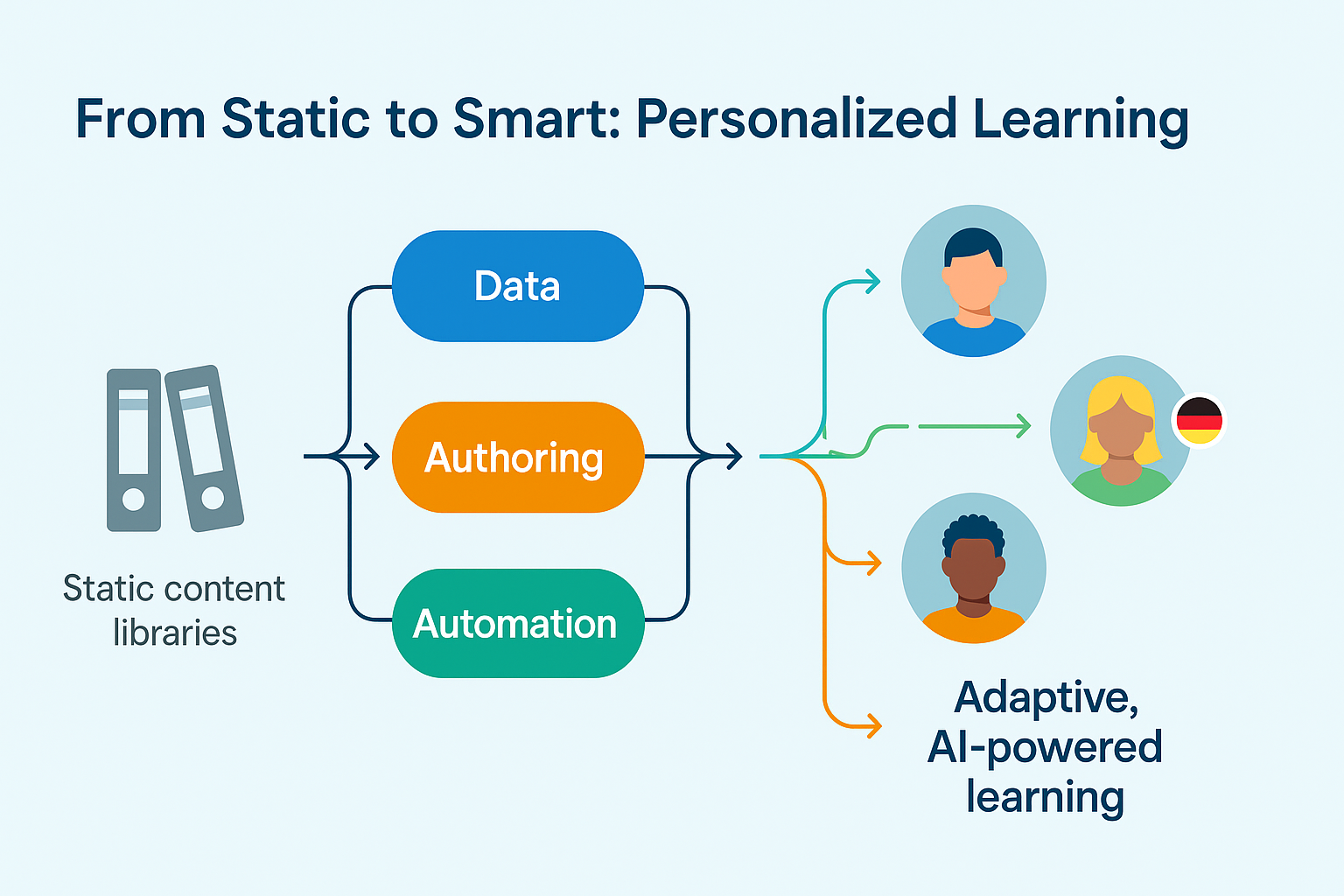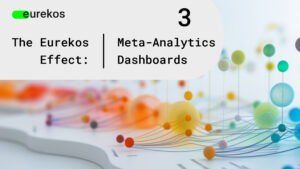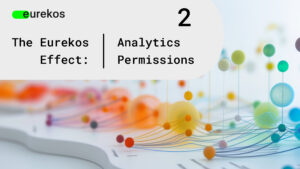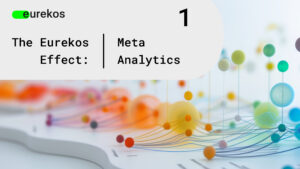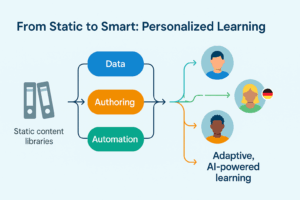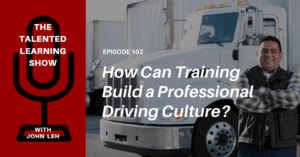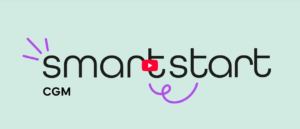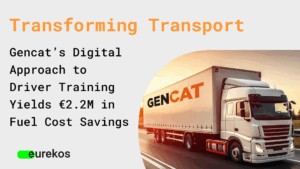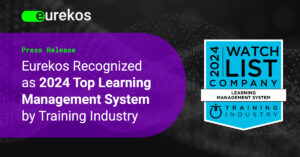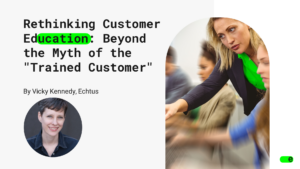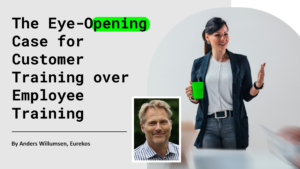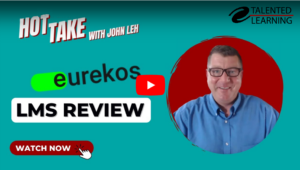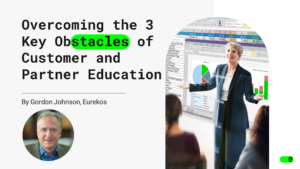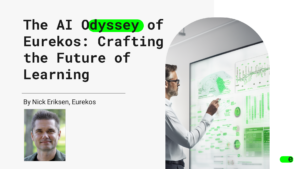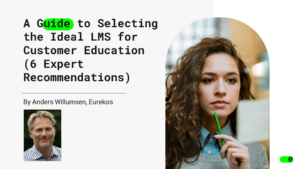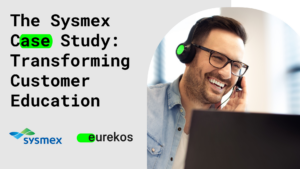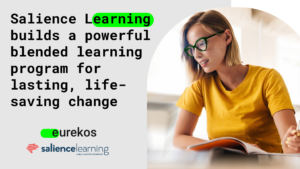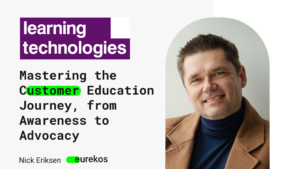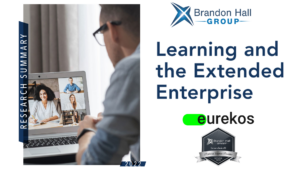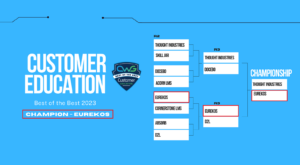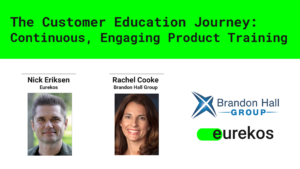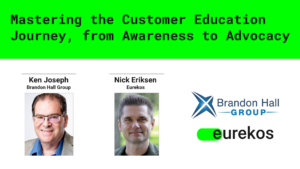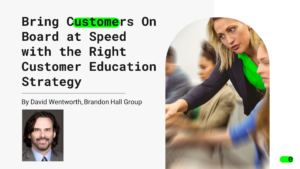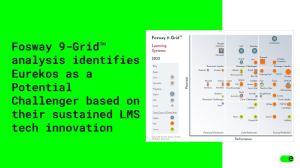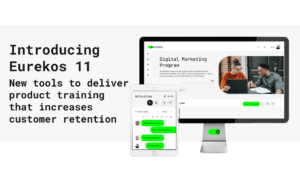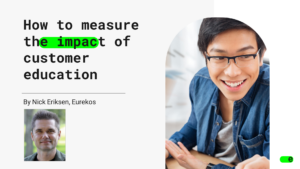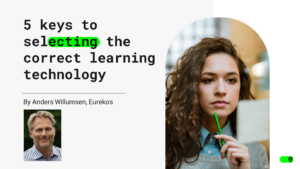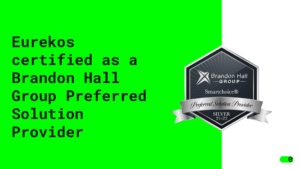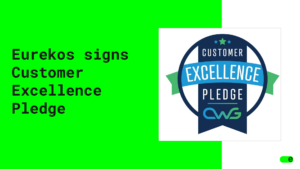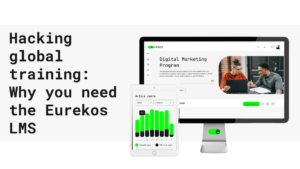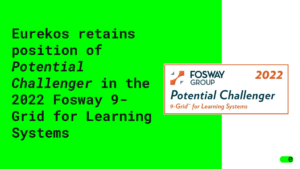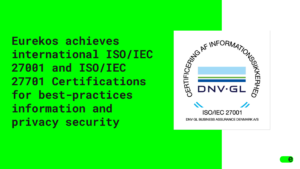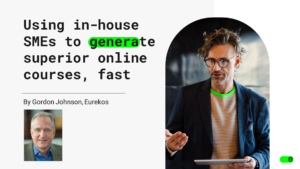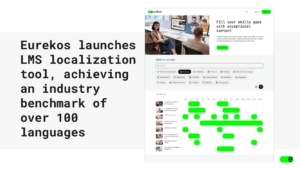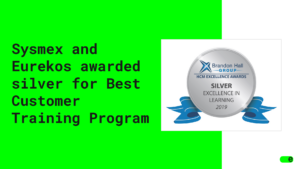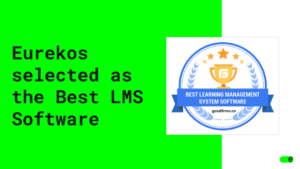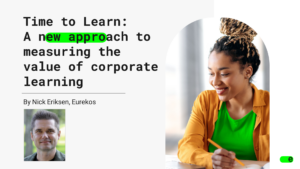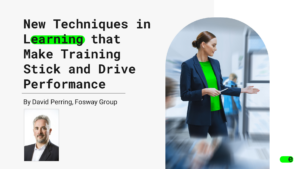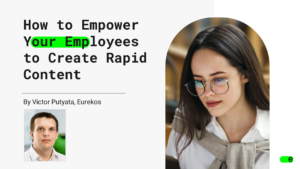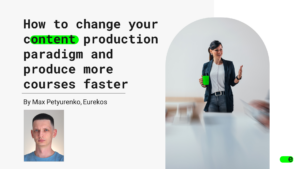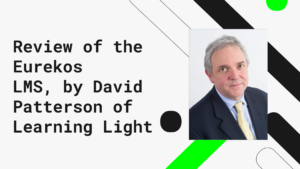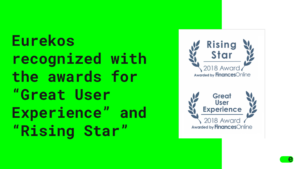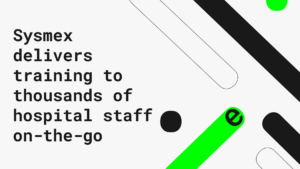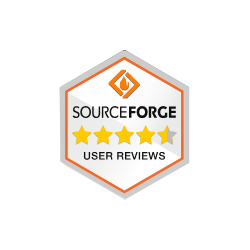By Nick Etlar Eriksen
From Static to Smart: Building an LMS Infrastructure for Truly Personalized Learning
Everyone’s talking about personalized learning as if it were a simple LMS feature add-on, when in reality, it requires a shift in how learning technology is built. In my experience, this “bolt-on” approach always fails because it tries to address new challenges with reactive measures.
Think about the complexity you’re dealing with in external training: Learners drop in and out. Roles change constantly across global networks. You’re faced with the challenge that your partners’ partners are training end customers. And often, data sources fragment across systems that were never designed to talk to each other. Of course, static content libraries can’t cope with this reality. But layering poorly executed personalization on top doesn’t work, either. It just makes the gaps more visible.
Why does this matter so much right now? Recent research shows AI-powered learning can slash training time by 50% and boost knowledge retention by 30% when it targets content to individual learner needs. That’s not just impressive for internal L&D teams. In external training, those gains are operational necessities because you can’t control when partners engage with your content, how much time they’ll invest, or whether they’ll complete programs that don’t immediately prove their value.
But AI-assisted learning isn’t some magic switch. True personalization emerges from a broader data + authoring + automation ecosystem working together. In other words, understanding the hidden infrastructure that makes scalable personalization possible is absolutely critical in all of this.
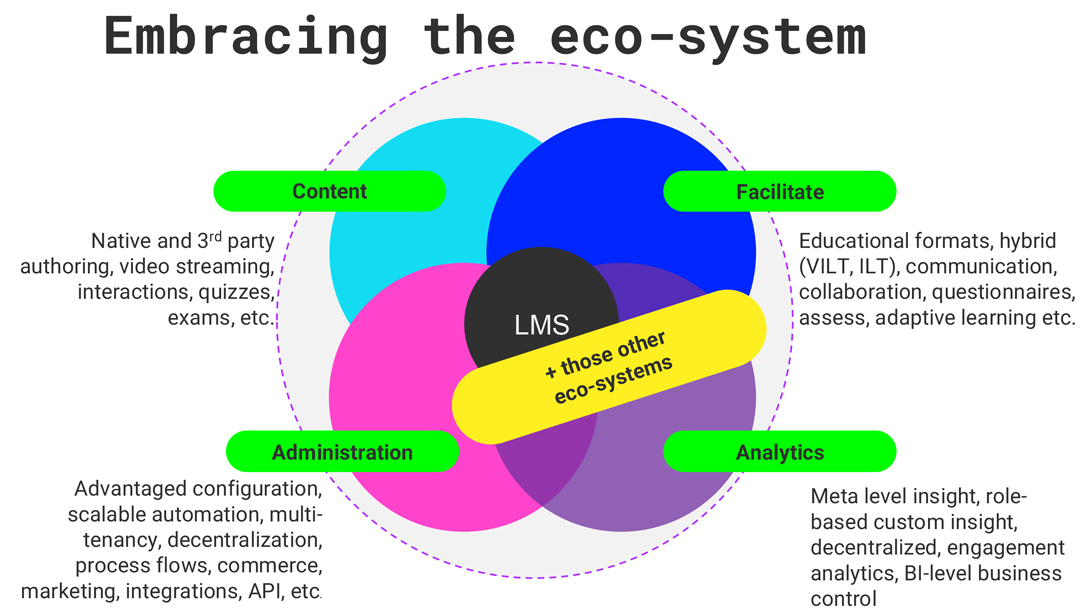
Let me share some of our latest insights here
Why Personalization Needs a Strong Foundation
Before getting into the “how,” it’s worth staying with the “why” for a moment. As mentioned, external training ecosystems carry more complexity than internal programs and higher stakes when something goes wrong. Role, compliance requirements, market, and goals all shape what an individual learner should see.
From my perspective, without a framework that connects content to learner information, AI-powered learning has no reliable base. Structured authoring and data design are the wiring behind LMS personalization.
But maybe it’s easier to see why this matters if we look at what actually happens in external training every day.
The Messy Reality of Partner and Customer Training
If you’ve worked in partner or customer training, the picture is probably familiar: A manufacturer trains distributors. Distributors train resellers. Resellers train end customers. People change roles mid-program, or appear without warning. Delivery spans multiple languages, often without a single shared system of record. The same challenge also shows up in other contexts—from SaaS companies to specialist training providers—where you often know little about a direct end customer’s prior knowledge, experience, or even what they are looking for when they engage.
This is the “unknown learner” problem. You can’t gather every detail at sign-up— it adds friction. The platform has to adapt as learner information builds through activity, completions, and assessment results.
I often say that without this adaptability, a learning journey starts to drift almost immediately. In external ecosystems, personalization is a question of how you keep training relevant while avoiding an avalanche of manual adjustments.
Why Static Content Libraries Fall Short
That brings us to the limits of static content. In a fixed library, everyone sees the same modules in the same order. Experienced learners repeat material they’ve mastered. Novices skip over critical foundations. Engagement drops, and learning outcomes suffer as a result.
Adaptive learning turns that around. A recent meta-analysis reviewed 37 studies on adaptive learning systems and found that 86% reported improved outcomes when content adjusts to learner needs rather than following predetermined paths. The biggest limitation is that static knowledge hubs can’t replicate the nuanced decisions an experienced instructor makes in real-time. Navigating them can also feel overwhelming, leading to cognitive overload.
That’s why true personalization has to capture some of that instructor intuition (e.g., signals about where a learner is struggling or ready to move on) and build it into adaptive triggers with conditional logic.
The Hidden Infrastructure Behind Scalable Personalization
McKinsey’s 2025 AI report makes one point clear: the real AI advantage comes when it is deeply embedded in workflows and supported by resilient, modular infrastructure, not slapped onto outdated systems. For LMS personalization, that means re-engineering the data, authoring, and automation layers so adaptation can operate as a proactive partner every step of the way.
And this is exactly where we’ve shaped our approach at Eurekos. By building the infrastructure from the ground up, we’ve built an adaptive system that responds to each learner without adding layers of complexity for those managing it.
This involves:
Tagging, Data Triggers, and Modular Logic
We treat tagging as the DNA of our content. Every page, activity, or asset carries markers—skill level, compliance category, product type, or language. Conditional triggers read those markers to decide what happens next in the learner’s path.
Two adaptive behaviours form the foundation:
- Module appears if criteria are met: hidden until the learner meets specific conditions.
- Module becomes optional if criteria are met: required until the learner meets conditions, after which it’s excluded from progress tracking.
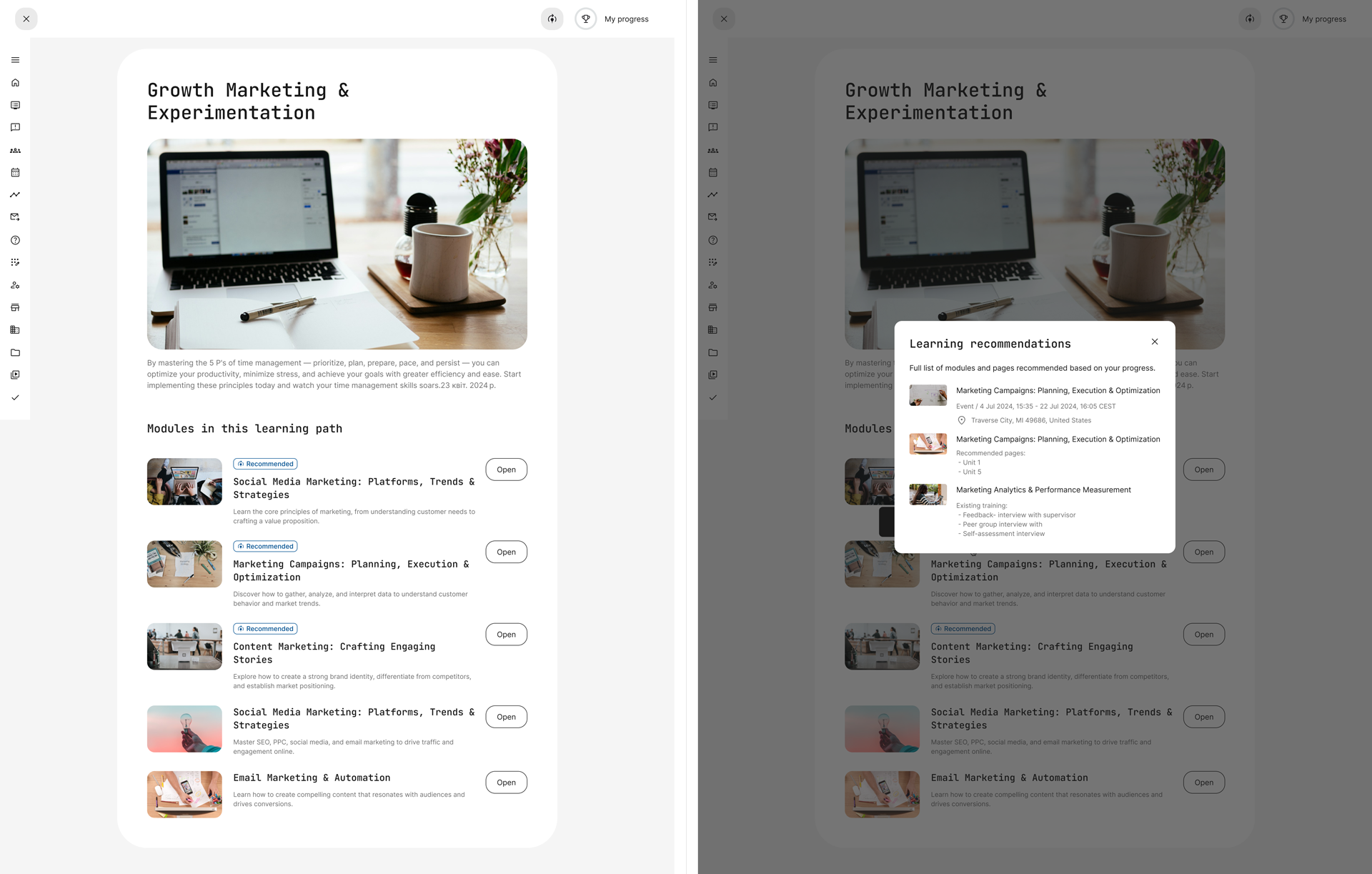
Criteria can include quiz scores, certificates earned, event attendance, assigned job function, course completions, or even a single question’s answer using flexible AND/OR logic.
In short, our approach is rooted in modular, reusable design, and that’s not just opinion. Semantic modularity research from 2022 demonstrates that adaptive systems, built on reusable content blocks, can adjust pathways dynamically while preserving coherent learning outcomes. In practice, this means personalization happens without rebuilding entire courses, keeping the experience relevant for learners and the infrastructure lean for administrators.
Eurekos’ Built-in Authoring Tool
Builtin authoring is how we keep personalization precise. With Eurekos, creation and delivery live together, so checkpoints sit where they matter, and every click, choice, and quiz item becomes learner information. Because data quality starts at the source, adaptive logic can react in real-time rather than waiting on delayed or partial signals.
External authoring still connects when needed, yet it often takes extra setup to reach this level of granularity. By owning the workflow, we keep updates simple and fast.
Next, a certification example shows how this plays out.
Example: Adaptive Triggers in Certification Workflows
Picture a certification where a learner passes overall but fails a critical safety item. Instead of marking them complete, the system instantly assigns a targeted refresher.
Or what about a module that’s required until a specific benchmark is met? As soon as it’s reached, the module switches to optional and progress tracking updates.
Notifications make this clear: “Module unlocked” or “You can skip this one.”
Additionally, Recommendation Management provides even greater precision. Specific quiz responses can trigger follow-up content that closes the exact gap. That’s personalized feedback in action, and it’s far more valuable than a simple pass/fail score.
Personalization Starts Long Before the First Module
Another thing I’ve learned is that real personalization doesn’t wait until someone opens their first module. It starts the moment they step onto the platform. Strategic profiling, intelligent enrollment, and smart visibility rules make sure learners see content that actually matters to them from the start.
Profiling Learners to Shape Storefronts and Enrollments
The trick is capturing just enough information to be useful without killing engagement. A few targeted questions at enrollment, such as role, experience level, language, and compliance needs, can shape what appears in their storefront or course catalog. This helps address the “unknown learner” problem and can work in conjunction with the data you already have. From there, the system adapts: surfacing certifications for the right job functions, hiding modules built for completely different audiences, and keeping the learning journey relevant from day one.
In that sense, learner profiling is never static. Ongoing interactions feed into evolving recommendations, building more accurate profiles over time. With Eurekos, you can track:
- Which content types engage specific learner segments
- How quickly different groups progress
- Where knowledge gaps consistently appear.
That kind of behavioral data shapes smarter recommendations down the line and flags the moments where it’s worth stepping in manually.
Adaptive Learning: Going Deeper Than “Hi, [First Name]”…
Surface-level personalization, such as changing names in email headers or swapping banner images, falls far short of meaningful adaptation. What your LMS needs is structural personalization: logic-driven, context-aware systems that can adjust pathways mid-journey and respond to learning performance in real-time.
Here’s how we do it:
Structural Logic for Branching and Recommendations
Sophisticated branching logic routes learners to different paths based on quiz results, role designations, or behavioral patterns that emerge during their learning journey. Again, these aren’t static decision trees but dynamic recommendation engines that evolve with learner performance and changing business needs.
For example, our Recommendation Management systems trigger targeted suggestions based on whether answers to specific quiz questions are correct or incorrect. This functionality, in turn, displays custom pass/fail messages that guide learners toward their next most relevant steps. The system labels recommended modules directly within learning paths, ensuring suggestions are contextually relevant and not overwhelming.
This means recommendations are conditional, context-aware, and evolve as learners progress.
Adaptive Learning Inside Modules, Even Down to Section-Level
The newest capability extends adaptivity inside individual modules, allowing module sections to display different content or skip entirely based on learner data from LMS profiles and previous activity. That way, advanced learners can bypass basic conceptual explanations, while novices receive additional scaffolding without either group feeling that the content they see is poorly matched to their needs.
Cognitive science offers the perfect validation here. The so-called expertise reversal effect shows that learners benefit most when instruction is tailored to their level: novices need structure, while more experienced learners do better when the guidance relaxes. Embedding that principle into section-level adaptivity makes personalized learning simply more human.
Looking ahead, we plan to align that granular flexibility with the same logic that controls module-level adaptation—another big step toward seamless, dynamic content delivery.
The Payoff: Less Waste, More Value
In practice, this means adaptive learning becomes both a learning technology advantage and an operational efficiency gain—the rare combination that serves individual learner needs and business goals equally well.
Cutting Admin Drag and Focusing SME Time Where It Counts
Automation is one of the biggest wins. Profile-driven enrollment, automated tracking, and conditional recommendations reduce manual admin.
That leaves SMEs free to refine the content that delivers the most value. Instead of reteaching basics, they can focus on advanced, scenario-driven modules.
For administrators, it’s about confidence. The system handles the routing. They focus on improving the learning technology strategy, knowing the adaptive learning logic is delivering personalized learning paths that make sense for each learner.
